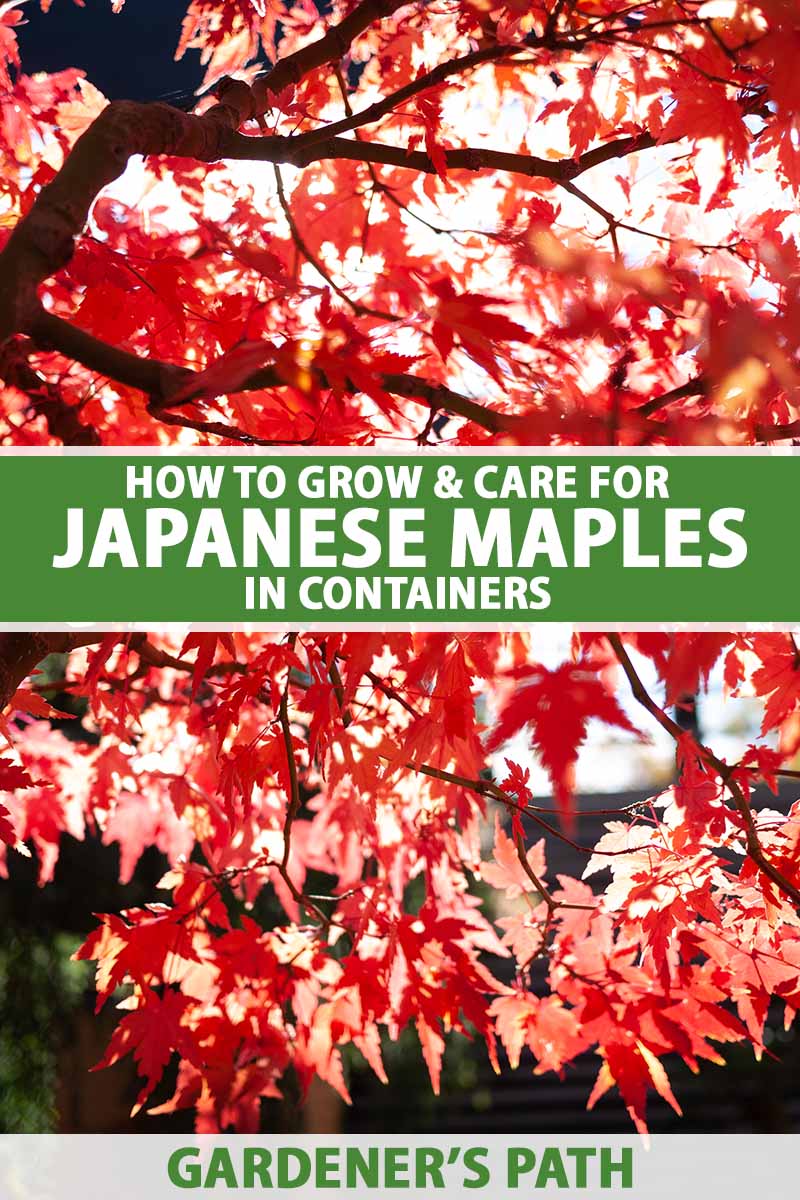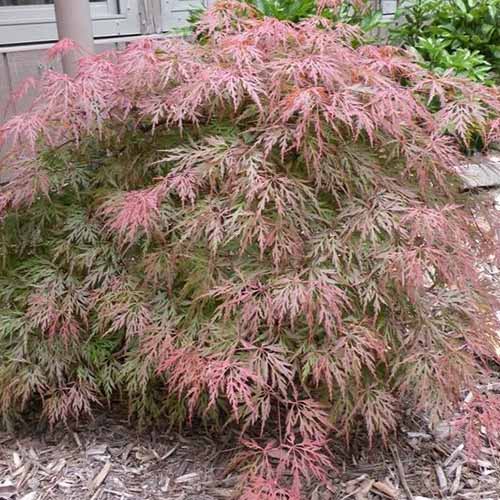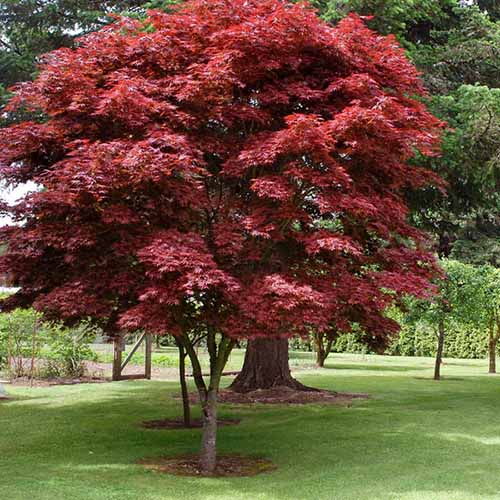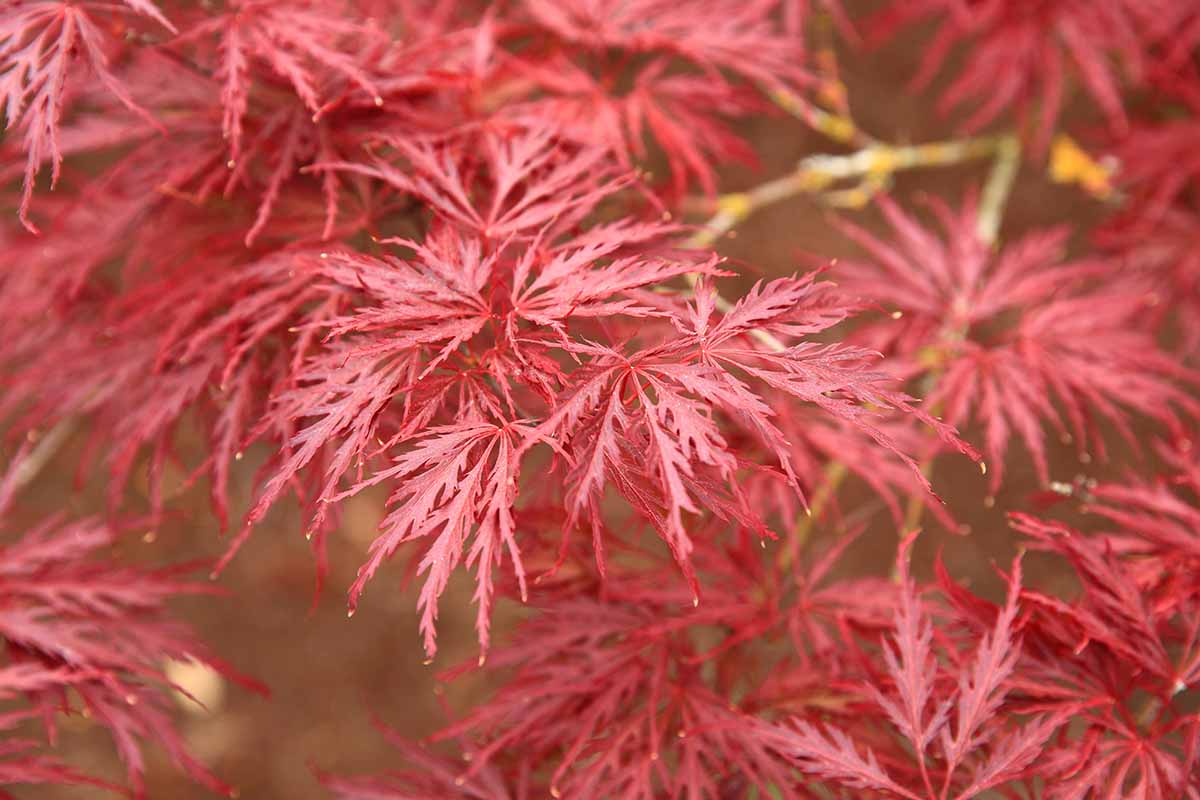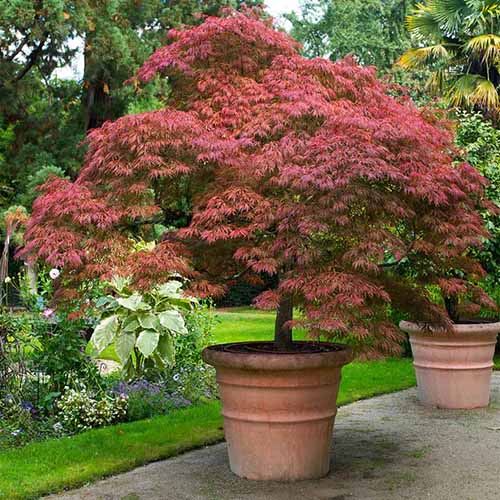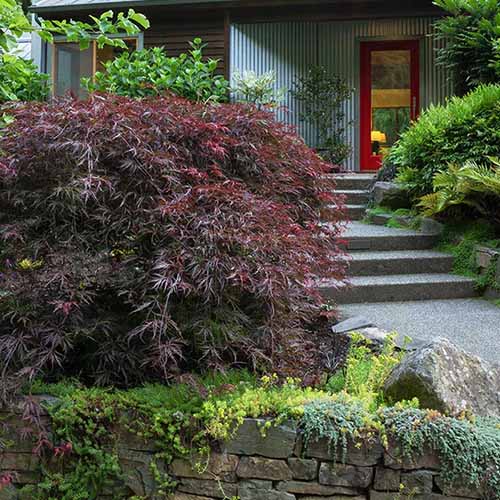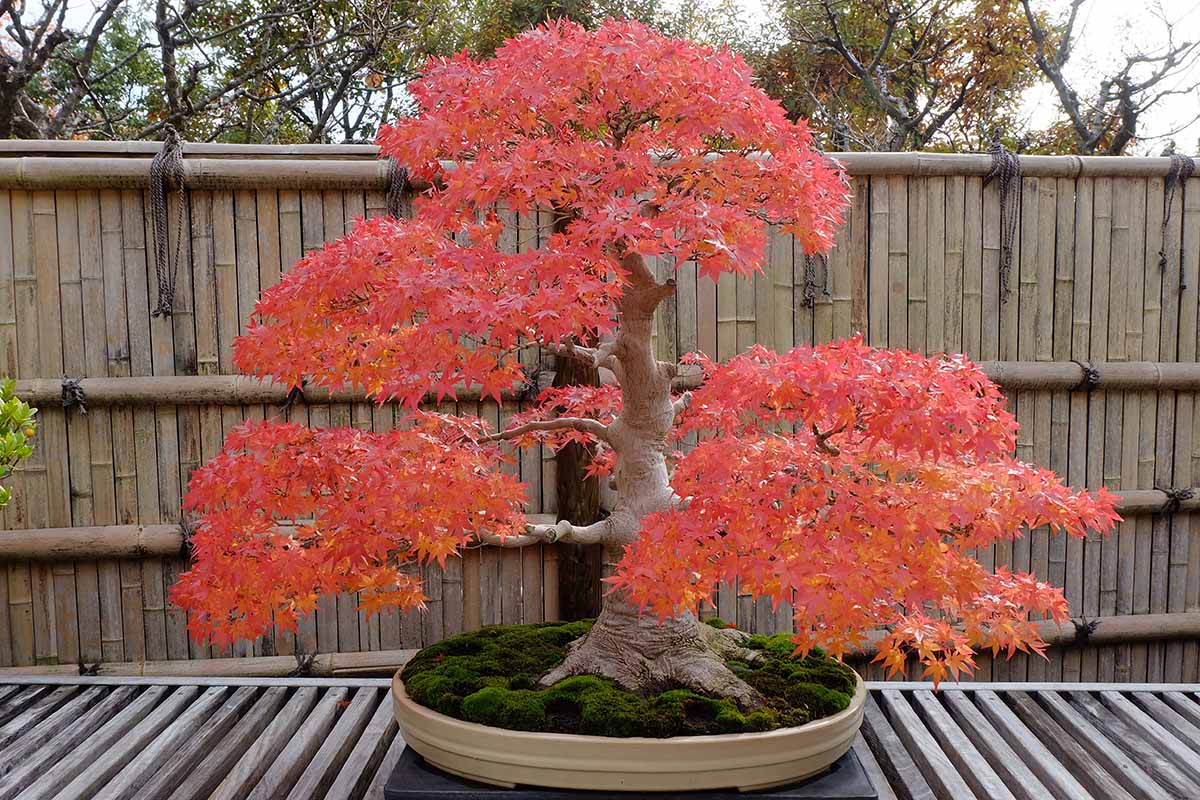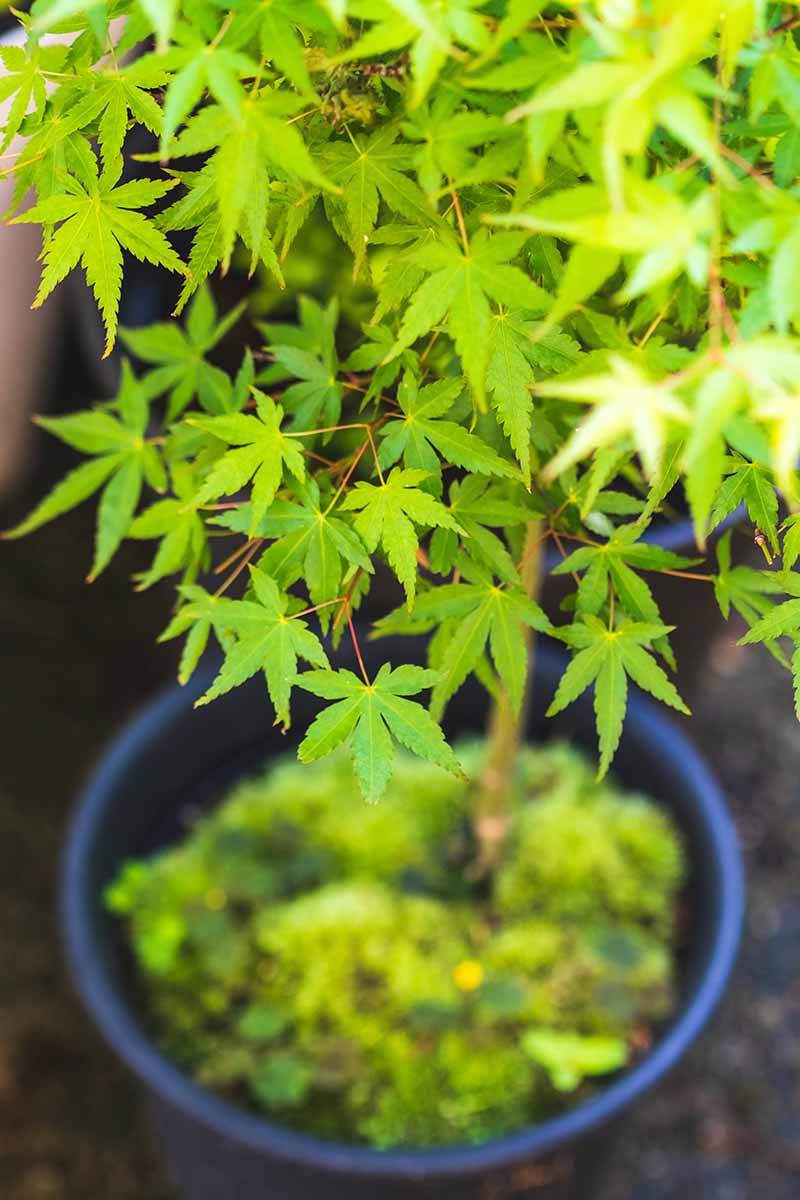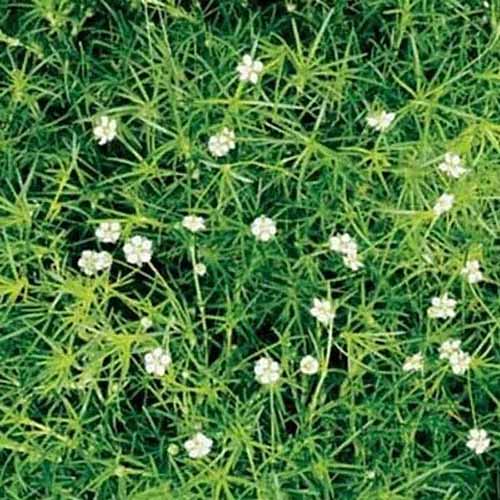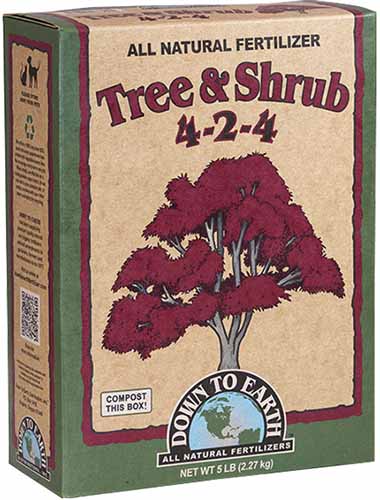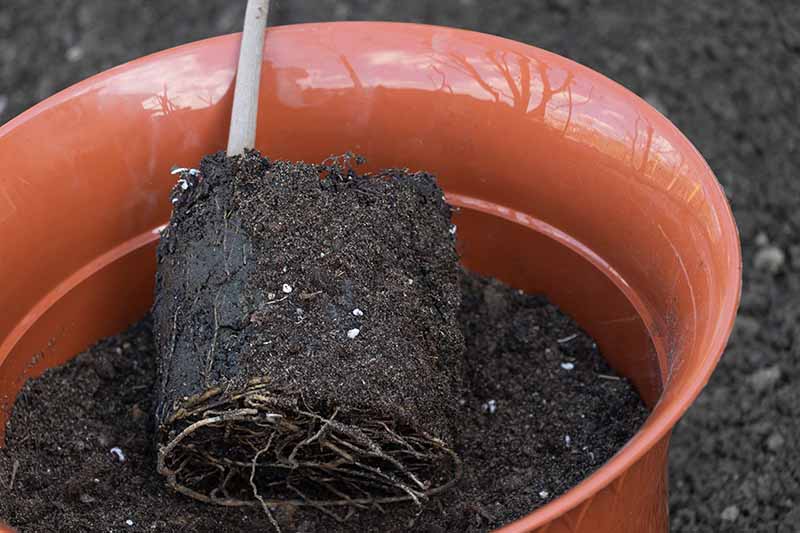We link to vendors to help you find relevant products. If you buy from one of our links, we may earn a commission. While the dwarf or semi-dwarf cultivars are the easiest, you can grow any variety in a container because they all have a compact root system that tolerates confinement. Add to that the fact that these trees come in such a massive range of leaf and bark colors and foliage shapes, and you can see why they make appealing options for container growing. There are lots of reasons to grow a Japanese maple in a container. You can add some height to a garden or grow a tree on an urban apartment balcony, for starters. Regardless of your motivation, the process is the same for planting and caring for these marvelous trees. To help you make it happen, here’s what we’ll discuss in the coming guide: If you want to grow a tree in a container, you can’t find a better option than Japanese maple. Here’s everything you need to know, beginning with recommended cultivars to choose from.
Best Cultivars
Like we said earlier, any Japanese maple can be grown in a pot. Here is just a sampling of a few cultivars that make particularly good potted options.
Abigail Rose
If you’re looking for a cultivar that can liven up a partially shaded spot, search out this uncommon A. palmatum dwarf. The leaves have an interesting crinkled texture, but that’s only the beginning. The foliage of this ‘Higase Yama’ sport is bright pink at the margin with lime green centers. It stays under five feet tall for a compact but bold statement.
Geisha Gone Wild
A. palmatum ‘Geisha Gone Wild’ is a sport of ‘Geisha’ that outshines its parent plant. The leaves have bright red and pink margins with pinky-green interiors. In full sun, the colors are more green with cream margins. It tops out at about five feet.
Jubilee
A. palmatum ‘Jubilee’ will undoubtedly draw comments. It’s like nothing else out there. The deeply lobed leaves are pink with stand-out red veins. As the season progresses, the leaves turn green, pink, and cream with bright pink veins, all on an eight-foot-tall tree.
King George’s Broom
Lovingly referred to as the “Russian spy,” A. palmatum ‘KGB’ is a dwarf that stays about three feet tall with red and pink leaves that change to red and purple in the fall. It has a broom-like shape that looks particularly nice in a container. Terra cotta is usually cheaper than other materials and breathes well, but it also tends to crack in areas where freezing temperatures are common. With bold, bright orange foliage in the fall, it already stands out. But add to that the green spring foliage and the purple summer leaves and you have a constantly evolving show. ‘Orangeola’ Run to Planting Tree to nab a one- to two- or two- to three-foot-tall plant.
Oregon Sunset
I have to admit I’m partial to this one because it’s named after the brilliant evening skies in my home state, but even if that weren’t the case, it would still be worth a look. ‘Oregon Sunset’ has a unique upright but spreading growth habit, sort of like a half weeping maple. During the spring, the foliage is a striking, bright red, transitioning to plum in the summer. By fall it fades to an elegant pastel orange. It’s slow-growing, as are most A. palmatum cultivars, but if you give it time, it will eventually reach 10 feet tall. ‘Oregon Sunset’ Best get started growing your own, so head to Planting Tree to purchase a two- to three- or three- to four-foot tree.
Red Dragon
Gorgeous A. palmatum var. dissectum ‘Red Dragon’ is a classic for good reason. The heavily serrated leaves look like bright red pieces of lace dancing in the breeze. The foliage is reddish-plum in the summer and warm burgundy during the fall. If you have a sunny spot, this cultivar is ideal. It maxes out at 12 feet tall at maturity. ‘Red Dragon’ Bring one home by heading to Fast Growing Trees for a live one- to two- or two- to three-foot-tall plant.
Ryusen
I’ve had my eye out, looking for one of these A. palmatum cultivars, because it has one of the most elegant shapes of any Japanese maple. It has green palmate leaves like what you’d typically see on upright forms, but the branches grow upright for a bit before arching and cascading back down. In the fall, it shifts to stunning shades of yellow, orange, and red. While it grows to about 20 feet tall, it’s easy to keep smaller in a container with pruning.
Tamukeyama
This A. palmatum is wider than it is tall, topping out at eight feet tall but spreading 12 feet wide. With its beautiful shape and red, heavily lobed, and serrated foliage, it makes an eye-catching focal point. ‘Tamukeyama’ Fast Growing Trees carries two- to three- or three- to four-foot-tall plants if you want to bring this beauty to your yard.
Pick the Perfect Container
When it comes to selecting the right container, pretty much anything that can hold soil and has drainage holes will work. But different materials can make your job easier or more difficult, depending on what challenges you’re facing. For instance, metal containers tend to heat up quickly and don’t protect the roots from cold as well as, say, cement does. If you live somewhere that experiences freezing winters and sweltering summers, metal is probably not the right choice. It’s a serious challenge to repot a huge tree, and you don’t want to be doing it every year after your pot cracks during the winter. You can wrap it in burlap or cardboard to help prevent this, or go with a different material. Plastic is a popular choice because it’s affordable, durable, and lightweight. These don’t last as long or protect the roots from cold as well as other options such as cement or stone do, but they hold water well. For a dwarf cultivar, a five-gallon container is a good place to start, but you’ll certainly need to upgrade in the future. A wheeled base either built-in or for placing the container on is a back saver if you ever plan on moving the tree. You can find elegant ones that stay in place and add to the appearance of your display or you can find more utilitarian ones that can hold an impressive amount of weight, like this one by CASIMR, which can help you move up to 440 pounds. Heavy Duty Plant Stand with Wheels Speaking of size, if you’ve ever seen a Japanese maple bonsai, then you know they can grow in teeny-tiny pots. However, unless you’re ready to commit to a lot of work, you’re probably going to want to choose something a bit larger. For a full-sized tree, start with a 20-gallon container, minimum. At some point, you’ll still probably want to go up a size or two, but this is a good place to start. Whatever you choose, it absolutely must provide good drainage. If you use a pot that doesn’t have drainage holes, you’re setting yourself up for disaster – root rot won’t be a matter of if, but when. In rainy regions, your tree might not even make it a year. If you’re worried about soil running out of the drainage hole, use a piece of wire or plastic mesh to cover the hole before placing the potting medium in the container.
Choose a Potting Soil
Any good-quality potting soil will do the job, but we can do better than that, right?
Planting Tips
To plant your new tree, first place a bit of soil in the container as a base. You ultimately want the tree to sit at the same level it was in the container that it came in, so just do your best to eyeball the height. We’ll cover this in a bit more detail in the care section below. I’m a huge fan of FoxFarm Ocean Forest Potting Soil mix for several reasons. It has the right pH for Japanese maples, includes bat guano, fish meal, and earthworm castings for nutrients, and has the perfect texture to allow both water and air to access the roots. FoxFarm Ocean Forest Potting Soil If you don’t have consistent rainfall or a container watering system in place, add coconut coir, sphagnum moss, or rice hulls to a high-quality potting soil. I prefer the last option because rice hulls are exceptionally sustainable. They’re a waste product that’s totally renewable. They also increase aeration and improve drainage. Rice Hulls Nab a quarter, half, or full cubic foot of hulls at Arbico Organics. Don’t place any broken pottery or rocks in the base of the container. I know this is a commonly recommended practice, but it won’t help with drainage. Just fill the entire container with your chosen medium. Remove the plant from its pot and gently loosen the roots. Place the plant into the container. If it is sitting too low, add a bit more soil. If it’s sitting too high, scoop a little out. Once you have the right height, fill in around the roots with soil. Be sure to leave an inch or so of space at the rim to allow for easy watering. Water the soil well to help settle it. You’ll probably find that everything settled a bit more than expected. If so, add a bit more potting medium and water again.
How to Care for Potted Maples
Depending on the cultivar, place your tree in a spot where it will receive partial to full sunlight. Japanese maples can survive in less light, but they tend to become leggy. If you don’t have a container watering system set up or your plant won’t be hit by sprinklers, you might want to invest in some sort of irrigation system. If you live in a rainy area, a dropper might be all you need, or you might want to install a drip irrigation system that hooks up to your hose spigot. Japanese maples like consistent moisture and they won’t grow as well if they experience regular drought. It’s one thing to keep trees in the ground watered, but it’s another thing entirely for trees in containers. Pots tend to dry out more quickly than the soil in the ground. If you can stick your finger into the soil and it’s dry to your first knuckle, it’s time to add water. You can certainly add mulch to help the soil retain water, such as a layer of stones, pine chips, or straw, though I’d argue that moss is far better-looking. As with all potted plants, you will absolutely need to fertilize your trees. The soil in containers leaches nutrients more quickly than ground soil, so you’ll need to reapply it. I find that Irish moss (Sagina subulata), which isn’t a true moss but is actually related to dianthus, is pretty universal. It can handle anywhere in Zones 4 to 8 and does well in pots. Irish Moss It doesn’t need a ton of moisture but it won’t fail if it receives oodles of rain for a while, so long as the drainage is good. Grab some from Nature Hills Nursery. Or you might consider planting something low-growing with shallow roots. Stonecrop (Sedum spp.), sweet woodruff (Galium odoratum), creeping Jenny (Lysimachia nummularia), barren strawberry (Geum fragarioides), and wild strawberry (Fragaria vesca) are all good options. Look for a fertilizer made specifically for trees or a mild balanced fertilizer with an NPK of 3-3-3 or 4-4-4. If they’re becoming compacted and there isn’t much soil visible, gently loosen the roots and brush away as much soil as you can. You might need to use a stream of water from your garden hose to assist in the process. Just as our microbiomes must be healthy for us humans to be healthy, plants need beneficial bacteria and fungi in their soil to keep them healthy. Down to Earth Tree and Shrub Fertilizer Grab a five- or 25-pound box of DTE’s Tree and Shrub food at Arbico Organics.
Repotting
You don’t have to repot your maples. If you like the container that it’s in, you can keep it there. You’ll just have to work at it. Every three years or so, you’ll need to pull the whole plant out of the container and check the roots. Using a clean pair of clippers, gently cut away about a quarter of the roots. Focus on anything that looks dead or rotted. Replace the plant in the container with fresh soil. If you decide to go up a size with the container, there is no need to trim away any roots unless you see some that are broken or dead. Remove the plant from the container, brush away as much soil as you can, and repot it in fresh, clean soil. Moving up a size can be done every few years or whenever the plant begins to look stressed, with frequent wilting, browning leaves, or roots emerging out of the soil or drainage holes. Whether you use them to add some height to a garden or to bring nature to a highrise balcony, these plants are ready for the job. Which cultivar are you planning to grow? Let us know in the comment section below. If you’re hoping to expand your Japanese maple gardening repertoire, we have several guides that you might find useful. Check these out next:
How to Grow Japanese Maple TreesHow and When to Fertilize Japanese Maple TreesHow and When to Prune Japanese Maples
